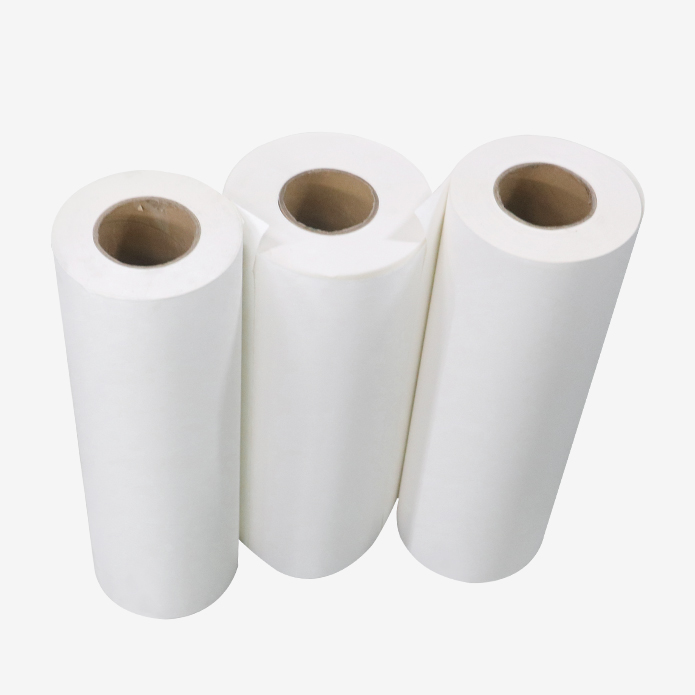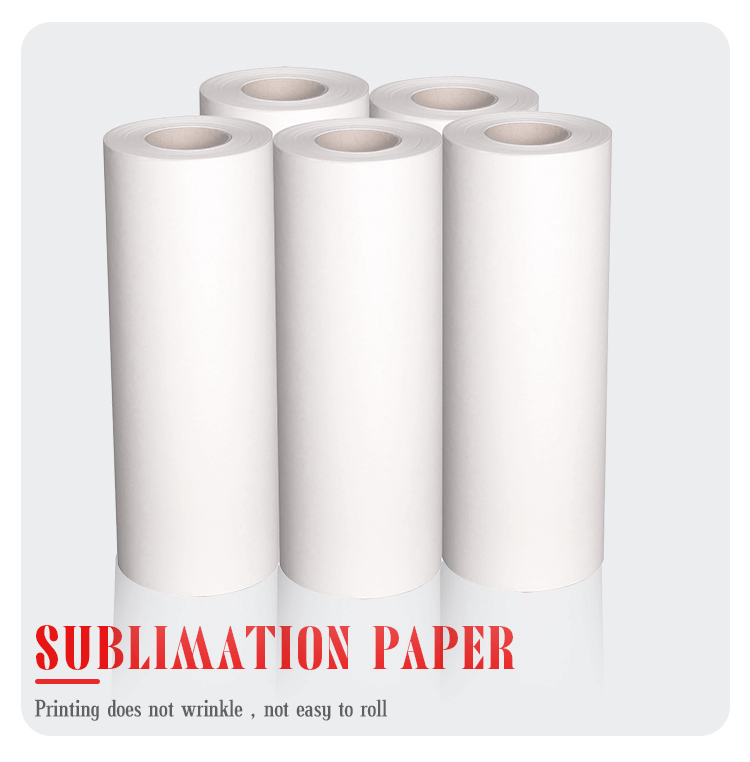
Heat Transfer Paper
"Heat Transfer Paper is a specialized printing material designed for transferring high-quality, vibrant designs onto various surfaces. This innovative product is commonly used in crafts, apparel decoration, and promotional merchandise creation. It works by transferring designs from the paper onto fabrics, ceramics, and other substrates using heat and pressure. Heat Transfer Paper offers excellent color retention, durability, and easy application, making it a popular choice for DIY enthusiasts and businesses alike. Whether you're customizing t-shirts, mugs, or other items, Heat Transfer Paper provides a convenient and professional solution for personalized creations."

| Product name | 100 gsm Sublimation Heat Transfer Printing Paper |
| Model | Z02 |
| GSM | 50,60,70,90,100gsm |
| Ink | aqueous dye, eco solvent ink, sublimation ink |
| Feature | easy drying, effective transfer |
| Usage | for sublmation printing |
| Keywords | sublimation papers |
| Packing | one carton box per roll |
| Brand | Best |
| Samples | Avaiable |
.png)
.png)
.png)
.png)
.png)
Thermal transfer paper is designed for high-quality image transfer. It features a smooth surface that accepts ink or toner, ensuring sharp and vibrant prints. It typically has a heat-activated adhesive backing, allowing designs to bond securely when heated. This type of paper is commonly used for labels, tags, and decals. Its durability, resistance to fading, and suitability for various applications make it a preferred choice for many businesses.
Inkjet heat transfer paper is available in various material options, including cotton, polyester, and blends. These materials cater to different fabric types and printing needs. Cotton paper provides a soft feel on natural fibers, while polyester offers vibrant prints on synthetic fabrics. Blended options provide versatility for various fabric compositions.
1. Ensure your heat press machine is set to the recommended temperature and pressure for the specific paper and fabric type.
2. Always print your design in reverse (mirror image) to ensure it transfers correctly.
3. Allow adequate cooling time after pressing to prevent smudging or misalignment.
4. Protect your heat press surface and garment from excessive ink bleed or residue by using a Teflon sheet or parchment paper.
5. Follow the manufacturer's instructions and perform test transfers on scrap fabric before applying the design to your final garment or substrate.
6. Store heat transfer paper in a cool, dry place to maintain its quality and prevent moisture damage.
7. Use caution when handling heated elements of the heat press to avoid burns.
8. Work in a well-ventilated area to minimize exposure to fumes from the transfer process.
.png)
.png)
Choosing the best heat transfer paper involves considering several factors. First, assess your specific project needs, including the material you're transferring onto and the complexity of your design. Next, consider the following criteria:
1.Type: Select between light or dark fabric transfer paper, depending on the color of your substrate. Light paper is for white or light-colored fabrics, while dark paper is for darker fabrics.
2.Printer Compatibility: Ensure the paper is compatible with your printer type (inkjet or laser).
3.Quality: Look for papers that offer vibrant colors, sharp image transfer, and durability.
4.Size: Choose the appropriate paper size for your project, whether it's standard letter, legal, or larger.
5.Brand: Reputable brands often offer better quality and reliability.
6.Instructions: Check if the paper includes clear and easy-to-follow instructions for successful transfers.
7.Cost: Consider your budget, but prioritize quality over price to avoid disappointing results.
8.Reviews: Read product reviews and seek recommendations from experienced users.
By considering these factors, you can select the best heat transfer paper for your specific project requirements.